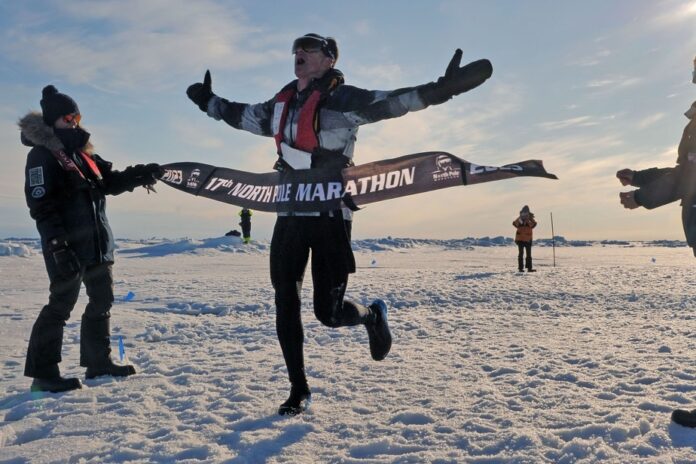(Montreal) The Trois-Rivières marathon runner Patrick Charlebois has accumulated feats: in addition to having run 10 marathons in ten days, across as many Canadian provinces in 2018, the athlete has also completed seven marathons on as many continents in seven days , the previous year. Here he is, having just won the 17th North Pole Marathon, becoming the first Canadian to achieve this feat.
This expedition, considered the most difficult marathon in the world, also allowed the Quebec athlete to join the Marathon Grand Slam Club, which has only two Canadians in its midst. Above all, the journey allowed him to take a fresh look at the impacts of climate change on the ice cap.
When taking our call, the crew of Commander Charcot and his passengers were ecstatic in front of a polar bear, seen an ice floe located nearby, testifies the main interested party.
Since the beginning of their expedition, ten days ago, the twelve marathon runners who took part in the event have been working alongside scientists who are also on board the Commandant Charcot, a cruise ship which also serves as a laboratory to study impacts of climate change on the North Pole.
Almost every day, passengers were able to attend various conferences on climate change and the environment.
“I come back with a completely different view of what’s going on in the world. It is quite exceptional, testifies the Farnhamian of origin. According to the scientists, in 2030 – it’s not in 25 years, 30 years, 35 years – in 2030, running a marathon at the North Pole is going to be impossible, because here, it’s going to be water. »
In fact, to cover the 1 kilometer loop 43 times that constituted the route of the marathon on the ice cap, participants had to wear a life jacket. If there was between six and twelve feet of snow under their feet, two hundred meters further, the ice had given way to the ocean.
“The ice cream was extremely fragile. They gave way under our feet, says the winner. My foot repeatedly sunk about five to six inches into the water. I even saw a monitor go about five feet into the ice. »
During the remaining days of the journey to bring the runners back to their destination, they will have the opportunity to further explore the Arctic region, whether by Zodiac, kayak or hiking.
At the geographic north pole, it was four degrees Celsius during the event. “It’s nice, but it’s still four degrees, it’s still quite concerning,” says Mr. Charlebois.
“The North Pole is the place that is most affected by the impacts of climate change,” he continues. When it is one degree higher here, in Quebec, it is four degrees higher at the North Pole. »
In addition to raising awareness of climate change, the challenge that Mr. Charlebois had set himself aimed to highlight the cause of research against cancer, he who joined the group Les Glasses Roses to raise 150,000 $.















